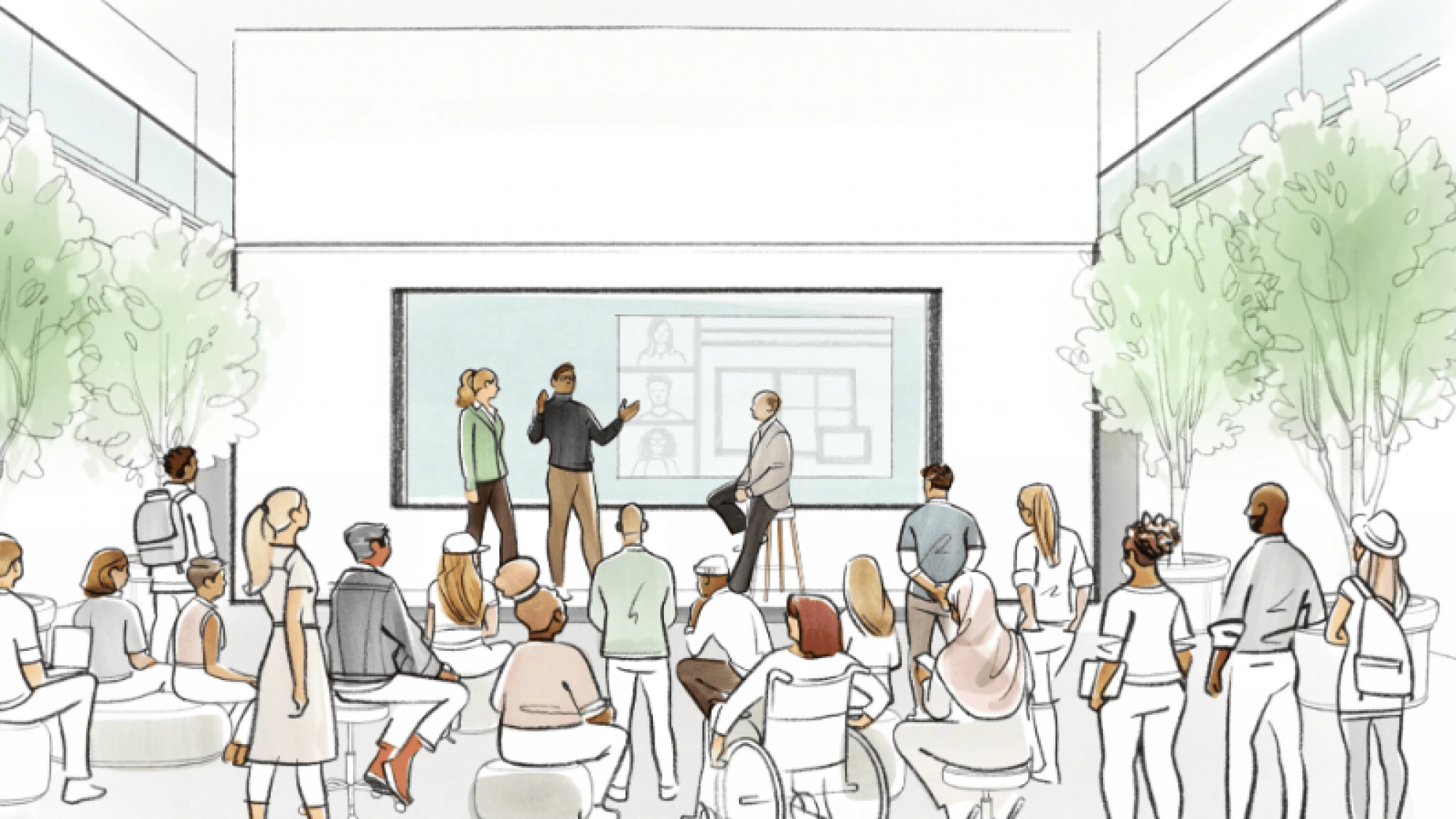Steelcase Inclusive Design Leader Damara Sudberry shares how tensions can inform inclusive design.
Designers, leaders and even inclusive design advocates often ask, “How do we balance everyone’s needs when they are very different?” Or, “Who do we listen to when there are competing needs?” These questions come up often because what might support an equitable experience for one group, may also create challenges for another.
There is no single solution, but there is power in understanding “tensions” or competing priorities.
As organizations partner with advocates and leaders, the opportunity to create more inclusive experiences has never been greater. People expect better as we come together in space to collaborate, learn and be productive. By considering these tensions and working alongside traditionally excluded perspectives and communities, leaders can be proactive and notice when decisions do not support the full spectrum of needs that exists – resulting in a mismatch or exclusion. Through our work we have identified five key design tensions to consider when designing for inclusivity.





Asking, “how can space empower and accommodate,” is how we can start to reimagine solutions and intentionally co-create inclusive experiences or destination spaces that align and reinforce a culture of equity and accessibility. “Designing for inclusivity creates an opportunity to make a collective impact,” says Meg Bennett, Steelcase global design principal. “When you understand the unique needs of one, you recognize synergies and solutions that can be scaled to many.”
Balancing Tensions
To help people reconnect, organizations are hosting large gatherings in expansive spaces, where everyone can come together. But the experience may not be right for all.
Before
In this central gathering hub, a diversity of people assemble, yet the space offers only one way to experience the event. The equality of the experience creates exclusion, limiting individual accommodation and leaving many feeling left out or uncomfortable. Bennet and her team explored the design tensions and identified how space can create a more equitable experience.

After
In this gathering space a diverse range of settings provides people with multiple ways to participate, making the experience more inclusive and welcoming for many.
- 1. High back individual lounge chairs provide the protection, psychological comfort and reduce visual distractions in the open. Standing-height tables provide choice so people can sit, perch or stand to support movement.
- 2. Elements like architectural walls, or built-in featured define a space providing a level of predictability, which is as critical as flexibility.
- 3. Shielded nooks provide a feeling of safety and comfort. Round table seating provides good sightlines and stackable, lightweight chairs allow quick reconfiguration and improve accessibility.
- 4. A defined area allows people to feel protected, grounded and able to self-soothe, Low seating provides additional options. Tables with integrated seating that swivels 360 degrees allows for movement and fidgeting.
- 5. A raised level for presenters allows better visibility. Swivel seating allows movement and mobile technology supports equity.
For some, the range of settings offered in this large space may still not provide them with what they need to feel comfortable. These other spaces located away from where the event is happening provide people and teams with other options to participate:
Enclaves
(Left)This dyadic space for two allows people to process and discuss during the presentation. This space was intentionally designed for hyposensitivity and people who benefit from vibrant colors, textures and space to move and fidget.
(Right) Individual spaces can be utilized to provide a more controlled environment to focus, retain information and feel safe and comfortable. This space as designed for hypersensitivity needs, and benefits from a calm, neutral palette, privacy curtains and acoustic wall panels.
Meeting Room
Smaller spaces, such as this meeting room provide options for teams or known colleagues to gather, or for those who benefit from additional hearing, language and visual support such as closed captioning, sign language interpreters, and language translation.

Classroom
This reservable classroom allows larger teams or groups to gather together to watch the Town Hall on video. Classrooms could also be reserved for a block of time for anyone to “walk-in.”

Receive our Newsletter
To receive our newsletter, including new editions of spaces and other digital content, fill out the form:



